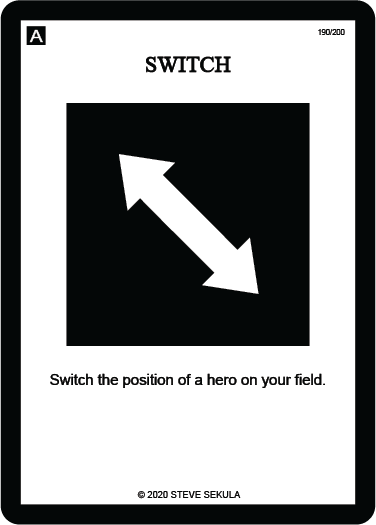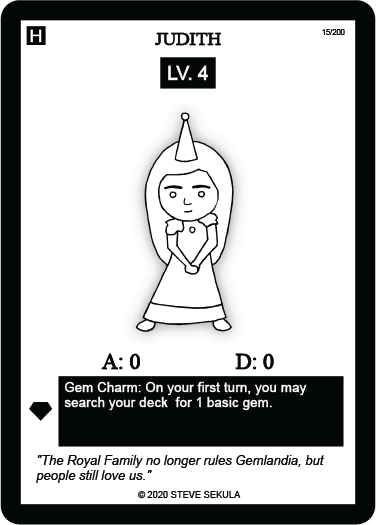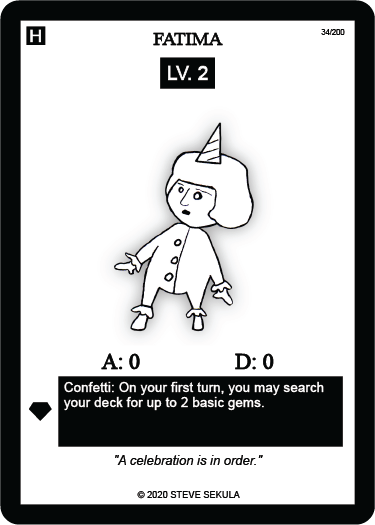Hello and welcome to the first installment of The Gemlandian Strategy Guide, where we give you all the tips and tricks we’ve learned through the years of being tournament-qualifying professional Gem Blenders. We hope to help readers take their skills to the next level by optimizing their plays and deck building strategies.
In today’s post, I’m going to talk about how to optimally use some of the most basic actions that you’ll find in most decks.
SEARCH WITH PURPOSE
Gem Search and Blend Search are cards I see misplayed quite often, and admittedly I misplayed them myself for quite awhile.
What you might be doing: Playing them as soon as you draw them, or all on turn 1.
What you should be doing: Waiting until the last second to use them.
These cards are most effective when they get the card you NEED immediately. If you use them before you need them, you might end up drawing duplicates, or your game plan might change in the interim. Here are some examples:
Example #1: You have 3 out of 4 gems needed for your level 4 blend. Not optimal: You Gem Search for that fourth gem too early, and end up drawing that same gem on your next turn. Now you have a duplicate, and you wasted your Gem Search. Optimal: You wait until the last second to Gem Search. What’s this? You end up drawing the gem you needed? Now you can use your Gem Search for something else!
Example #2: You have the gems and plan to play a level 3 blend, but will have to use a Blend Search. Not optimal: You search for the blend before getting your gems on the field, and end up drawing a duplicate. Optimal: You wait, and if you end up drawing the blend anyway, you have saved your Blend Search.
EXCEPTIONS
Gem Search: If your opponent knows your Gem Search is important, they might cancel it if they can. I don’t think this is a good enough reason to search non-optimally, but it’s something to keep in mind – it can ruin your plan. If you can, test the waters with another action first – Collect is a great play here, more on that later.
Blend Search: KNOW YOUR DECKLIST. If you only have one blend you can search for, then you should search for it right away. In general, optimal searching only applies to when you have multiple targets. If you only have one target, the opposite can happen: you draw the target, and now have a useless search.
Collect in the Right Order
Collect is perhaps the best card in the game — I automatically add 3 of them to most decks. What if I told you that you were collecting wrong this whole time?
Collect then Search Get the card you want with Collect, then shuffle away the cards you don’t want with a search. You also give yourself a chance to collect the card you were about to search for, and save the search for later, or search for something else so you can still shuffle away bad cards. This interaction is so useful, I would advocate for collecting only when you are about to search – don’t play Collect for no reason.
Reasoning: Count the cards you LOOK at! Collect lets you see 4 cards, and by shuffling the deck after a search, you see 3 potentially new cards over your next 3 turns, leaving us with 7 total cards seen - 4 from Collect, and 3 random over the next three turns. Compare this to just Collect: you see 4 cards, and then you see the same 3 cards you’ve just seen over your next three turns. Not optimal: Search+Collect = 4 cards seen over 4 turns Optimal: Collect+Search = 7 cards seen over 4 turns
Draw then Collect This is the opposite. Drawing the cards you collected is usually a waste.
Reasoning: Draw lets you see 2 cards (or 3 for a Super Draw), and Collect adds 4, to equal 6 (or 7). Alternatively, if you Collect first, you look at 4, and then Draw gets the same cards you just looked at. Not optimal: Collect+Draw = 4 cards deep Optimal: Draw+Collect = 6 cards deep
The most optimal action sequence is this: Draw+Collect+Search = 6 cards deep in one turn, 9 cards seen over 4 turns If you happen to have a handful of search/collect/draw actions, you can string them together and potentially go through most of your deck. This is great for finding that one card you might need, and another reason to always hold on to your actions until the last second.
EXCEPTIONS/OBJECTIONS You may think, what about using Collect to control my top deck? Of course you can do that! But optimally, you will have a search action in your hand, just in case you see bad cards you want to shuffle away.
What about the following sequence? Isn’t it the same as what was described above?
Collect+Search+Draw = 6 cards deep in one turn, 9 cards seen over 4 turns
This sequence has the same math, but doesn’t give you as many chances to draw the card you were about to search for, saving your search for something else.
Too often, a player will get excited with a Collect, and can’t wait to see 4 new cards. However, if you know it won’t change your turn, or has a very slim chance of changing your turn, then you should wait, either until you need it or until you are about to search. Patience, my young Gem Blenders. The time will come.
Cancel the Good Stuff
Cancel is best used defensively. Many actions can ruin your day, and those are the ones you should target. Gem Search, Blend Search, Collect, Draw – these are utility actions, and are usually not worth Canceling.
EXCEPTION: If it is their first turn, they have either Judith or Fatima, and the first thing they do is Gem Search — Cancel it all day. That might have been their only gem access, and they were counting on Judith or Fatima to get more.
Great things to Cancel are movement actions, since these can have lasting impacts. Alternatively, it is good to use a Cancel to protect your own movement actions. Another card with lasting impact is Bump – not a bad target for cancellation.
EXCEPTION: If you have a movement card that undoes their movement, you do not need to Cancel their action.
Of course, any number of exceptions can occur depending on your and your opponent’s deck list. These are just rules of thumb.
Better ways to switch
If you have a blend or hero that lets you move your field around, it can take the place of multiple movement actions — one Angel or Lester can move your heroes around every turn, while you would need many, many Switches.
I hope this blog was able to help you use actions optimally, or at least start thinking about optimal strategy in Gem Blenders. If you think I’m full of it, feel free to leave a comment.
Good blending!









